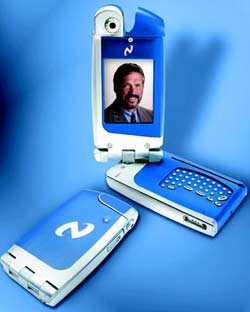When the first ultra-mobile Origami computer devices were just beginning to emerge, Microsoft was already looking ahead to the second generation of Origami, internally dubbed “Vista-gami”.
 |
| Source: Linux Magazine |
These second-generation ultra-mini tablets are expected to be “exact replicas” of the original Origami series, differing only in that they will run on Windows Vista instead of the current XP operating system.
Analysts hope that Vistagami will retail for a lower price than its predecessors (for example, Samsung’s Q1 starts at an impressive $1100).
Of course, Microsoft does not harbor illusions that its supercomputers could drop to a ceiling price of $500, but they assert, “we are not satisfied with the high costs of the first generation of Origami.” “We feel disappointed. We should have seen a much lower price point,” said Mika Krammer, Microsoft’s product marketing director for Windows.
Microsoft has been extremely successful in generating buzz with a massive promotional campaign for the Origami concept. The key point is that the software giant has always been vague about this project, withholding details regarding pricing, distribution methods, etc.
Affordability is Key
Microsoft is very confident in this concept. “The compactness factor is extremely important, as it is more convenient and portable.” However, Krammer, a former Gartner expert, agrees that the short battery life (less than a day) and high price are hindering Origami’s path to mass market acceptance.
To lower production costs, Microsoft must ignite a wave of competition among computer manufacturers and component suppliers. The emergence of systems running on Via processors, like the TabletKiosk, could significantly reduce the price of Vistagami, Krammer noted.
It is widely understood that only by becoming more affordable can Origami escape the image of a “tech toy” meant only for the wealthy.
Market research firm In-Stat predicts that shipments of mini PCs will rise to 7.8 million units by 2011. Intel’s Vice President Gadi Singer believes that the mini PC market could reach 100 million units per year, although he did not specify when this would happen.
In the case of Vistagami, Microsoft intends to launch the second-generation ultra-mini devices in time for Vista’s release (January 2007). As planned, Vistagami will be equipped with a software package that adds more features, allowing users to easily scan and launch programs on the device.
Additionally, the screen of Vistagami will be approximately 7 inches or slightly smaller. Other features are still under consideration.
Tian Yi

















































